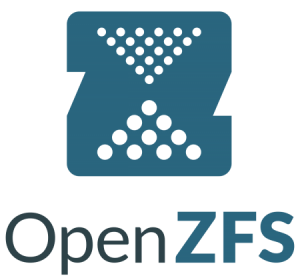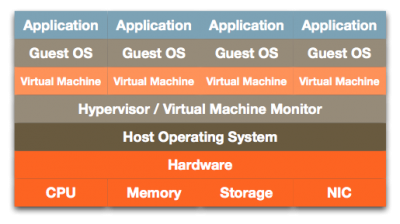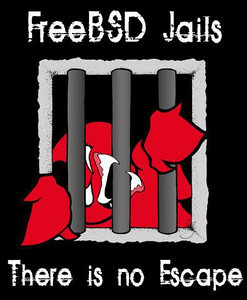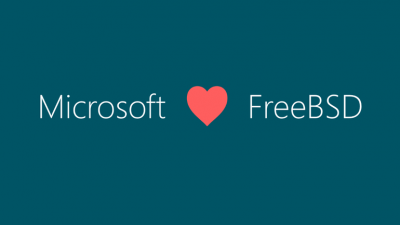
If you use GNU/Linux and you are only on opensource, you may be doing it wrong. Here’s why.
Is your company based on opensource based software only? Do you have a bunch of developers hitting some kind of server you have installed for them to “do their thing”? Being it for economical reasons (remember to donate), being it for philosophycal ones, you may have skipped good alternatives. The BSD’s and Illumos.
I bet you are running some sort of Debian, openSuSE or CentOS. It’s very discouraging having entered into the IT field recently and discover many of the people you meet do not even recognise the name BSD. Naming Solaris seems like naming the evil itself. The problem being many do not know why. They can’t poing anything specific other than it’s fading out. This has recently shown strong when Oracle officials have stated development for new features has ceased and almost 90 % of developers for Solaris have been layed off. AIX seems alien to almost everybody unless you have a white beard. And all this is silly.
And here’s why. You are certainly missing two important features that FreeBSD and Illumos derivatives are enjoying. A full virtualization technology, much better and fully developed compared to the LXC containers in the Linux world, such as Jails on BSD, Zones in Solaris/Illumos, and the great ZFS file system which both share.
You have probably heard of a new Linux filesystem named Btrfs, which by the way, development has been dropped from the Red Hat side. Trying to emulate ZFS, Oracle started developing Btrfs file system before they acquired Sun (the original developer of ZFS), and SuSE joined the effort as well as Red Hat. It is not as well developed as ZFS and it hasn’t been tested in production environments as extensevely as the former has. That leaves some uncertainty on using it or not. Red Hat leaving it aside does add some more. Although some organizations have used it with various grades of success.
If you find the articles in Adminbyaccident.com useful to you, please consider making a donation.
Use this link to get $200 credit at DigitalOcean and support Adminbyaccident.com costs.
Get $100 credit for free at Vultr using this link and support Adminbyaccident.com costs.
Mind Vultr supports FreeBSD on their VPS offer.
But why is this anyhow interesting for a sysadmin or any organization? Well… FreeBSD (descendant of Berkeley UNIX) and SmartOS (based on Illumos) aglutinate some features that make administration easier, safer, faster and more reliable. The dream of any systems administrator.

To start, the ZFS filesystem combines the typical filesystem with a volume manager. It includes protection against corruption, snapshots and copy-on-write clones, as well as volume manager.
Jails is another interesting piece of technology. Linux folks usually associate this as a sort of chroot. It isn’t. It is somehow inspired by it but as you may know you can escape from a chroot environment with a blink of an eye. Jails are not called jails casually. The name has a purpose. Contain processes and programs within a defined and totally controlled environment. Jails appeared first in FreeBSD in the year 2000. Solaris Zones debuted on 2005 (now called containers) are the now proprietary version of those.
There are some other technologies on Linux such as Btrfs or Docker. But they have some caveats. Btrfs hasn’t been fully developed yet and it’s hasn’t been proved as much in production environments as ZFS has. And some problems have arisen recently although the developers are pushing the envelope. At some time they will match ZFS capabilities for sure. Docker is growing exponentialy and it’s one of the cool technologies of modern times. The caveat is, as before, the development of this technology hasn’t been fully developed. Unlike other virtualization technologies this is not a kernel playing on top of another kernel. This is virtualization at the OS level, meaning differentiated environments can coexist on a single host, “hitting” the same unique kernel which controls and shares the resources. The problem comes when you put Docker on top of any other virtualization technology such as KVM or Xen. It breaks the purpose of it and has a performance penalty.

I have arrived into the IT field with very little knowlodge, that is true. But what I see strikes me. Working in a bank has allowed me to see a big production environment that needs the highest of the availability and reliability. This is, sometimes, achieved by bruteforce. And it’s legitime and adequate. Redundancy has a reason and a purpose for example. But some other times it looks, it feels, like killing flies with canons. More hardware, more virtual machines, more people, more of this, more of that. They can afford it, so they try to maintain the cost low but at the end of the day there is a chunky budget to back operations.
But here comes reality. You’re not a bank and you need to squeeze your investment as much as possible. By using FreeBSD jails you can avoid the performance penalty of KVM or Xen virtualization. Do you use VMWare or Hyper-V? You can avoid both and gain in performance. Not only that, control and manageability are equal as before, and sometimes easier to administer. There are four ways to operate them which can be divided in two categories. Hardcore and Human Being. For the Hardcore use the FreeBSD handbook and investigate as much as you can. For the Human Being way there are three options to use. Ezjail, Iocage and CBSD which are frameworks or programs as you may call to manage jails. I personally use Iocage but I have also used Ezjail.
How can you use jails on your benefit? Ever tried to configure some new software and failed miserably? You can have three different jails running at the same time with different configurations. Want to try a new configuration in a production piece of hardware without applying it on the final users? You can do that with a small jail while the production environment is on in another bigger, chunkier jail.
Want to divide the hardware as a replica of the division of the team/s you are working with? Want to sell virtual machines with bare metal performance? Do you want to isolate some piece of critical software or even data in a more controlled environment? Do you have different clients and you want to use the same hardware but you want to avoid them seeing each other at the same time you maintain performance and reliability?
Are you a developer and you have to have reliable and portable snapshots of your work? Do you want to try new options-designs without breaking your previous work, in a timeless fashion? You can work on something, clone the jail and apply the new ideas on the project in a matter of seconds. You can stop there, export the filesystem snapshot containing all the environment and all your work and place it on a thumbdrive to later import it on a big production system. Want to change that image properties such as the network stack interface and ip? This is just one command away from you.
But what properties can you assign to a jail and how can I manage them you may be wondering. Hostname, disk quota, i/o, memory, cpu limits, network isolation, network virtualization, snapshots and the manage of those, migration and root privilege isolation to name a few. You can also clone them and import and export them between different systems. Some of these things because of ZFS. Iocage is a python program to manage jails and it takes profit from ZFS advantages.

But FreeBSD is not Linux you may say. No it is not. There are no run levels. The systemd factor is out of this equation. This is so since the begginning. Ever wondered where did vi come from? The TCP/IP stack? Your beloved macOS from Apple? All this is coming from the FreeBSD project. If you are used to Linux your adaptation period with any BSD will be short, very short. You will almost feel at home. Used to packaged software using yum or apt-get? No worries. With pkgng, the package management tool used in FreeBSD has almost 27.000 compiled packages for you to use. Almost all software found on any of the important GNU/Linux distros can be found here. Java, Python, C, C++, Clang, GCC, Javascript frameworks, Ruby, PHP, MySQL and the major forks, etc. All this opensource software, and much more, is available at your fingertips.
I am a developer and… frankly my time is money and I appreciate both much more than dealing with systems configuration, etc. You can set a VM using VMWare or VirtualBox and play with barebones FreeBSD or you can use TrueOS (a derivative) which comes in a server version and a desktop oriented one. The latter will be easier for you to play with. You may be doing this already with Linux. There is a third and very sensible option. FreeNAS, developed by iXSystems. It is FreeBSD based and offers all these technologies with a GUI. VMWare, Hyper-V? Nowadays you can get your hands off the CLI and get a decent, usable, nice GUI.
You say you play on the cloud. The major players already include FreeBSD in their offerings. You can find it in Amazon AWS or Azure (with official Microsoft support contracts too!). You can also find it in DigitalOcean and other hosting providers. There is no excuse. You can use it at home, at the office, with old or new hardware and in the cloud as well. You can even pay for a support contract to use it. Joyent, the developers of SmartOS have their own cloud with different locations around the globe. Have a look on them too.

If you want the original of ZFS and zones you may think of Solaris. But it’s fading away. But it really isn’t. When Oracle bouth Sun many people ran away in an stampide fashion. Some of the good folks working at Sun founded new projects. One of these is Illumos. Joyent is a company formed by people who developed these technologies. They are a cloud operator, have been recently bought by Samsung and have a very competent team of people providing great tech solutions. They have developed an OS, called SmartOS (based on Illumos) with all these features. The source from this goes back to the early days of UNIX. Do you remember the days of OpenSolaris when Sun opensourced the crown jewels? There you have it. A modern opensource UNIX operating system with the roots in their original place and the head planted on today’s needs.
In conclusion. If you are on GNU/Linux and you only use opensource software you may be doing it wrong. And missing goodies you may need and like. Once you put your hands on them, trust me, you won’t look back. And if you have some “old fashioned” admins who know Solaris, you can bring them to a new profitable and exciting life with both systems.
Still not convinced? Would you have ever imagined Microsoft supporting Linux? Even loving it? They do love now FreeBSD. And not only that, they provide their own image in the Azure Cloud and you can get Microsoft support, payed support if you want to use the platform on Azure. Ain’t it… surprising? Convincing at all?

PS: I haven’t mentioned both softwares, FreeBSD and SmartOS do have a Linux translation layer. This means you can run Linux binaries on them and the program won’t cough at all. Since the ABI stays stable the only thing you need to run a Linux binary is a translation between the different system calls and the libraries. Remember POSIX? Choose your poision and enjoy it.
If you find the articles in Adminbyaccident.com useful to you, please consider making a donation.
Use this link to get $200 credit at DigitalOcean and support Adminbyaccident.com costs.
Get $100 credit for free at Vultr using this link and support Adminbyaccident.com costs.
Mind Vultr supports FreeBSD on their VPS offer.